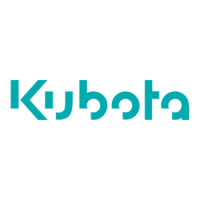50 PERIODIC SERVICE
.Checking
Battery Condition
[GR2100]
A
DANGER
To avoid
the
possibility
of
battery
explosion:
For
the refillable
type
battery,
follow
the
instructions
below.
•
Do
not
use
or
charge
the
refillable
type
battery
if
the
fluid
level
is
below
the LOWER
(lower
limit
level) mark. Otherwise, the battery
component
parts may
prematurely
deteriorate,
which
may
shorten
the battery's
service
life
or
cause an
explosion.
Check
the
fluid
level
regularly
and
add
distilled
water
as required
so
that
the
fluid
level
is
between the UPPER and LOWER levels.
A
CAUTION
To
avoid
personal
injury:
• Never remove
the
vent
caps
while
the engine
is
running.
• Keep
electrolyte
away
from
eyes,
hands
and
clothes.
If
you
are spattered
with
it, wash
it
away
completely
with
water
immediately
and
get
medical attention.
• Wear eye
protection
and
rubber
gloves
when
working
around
the battery.
Mishandling the battery shortens the service life and adds
to maintenance costs.
The original battery
is
maintenance free, but needs some
servicing.
If the battery
is
weak, the engine will be difficult to start
and the lights
will be dim. It
is
important
to
check the
battery periodically.
(1) Battery
• Battery Charging
[GR2100]
A
DANGER
To
avoid
serious
injury
or
death:
• When the
battery
is
being activated,
hydrogen
and
oxygen
gases in the
battery
are
extremely
explosive. Keep open
sparks
and flames away
from
the
battery
at
all times,
especially
when
charging
the
battery.
A
CAUTION
To
avoid
personal
injury:
• When
charging
battery, ensure
that
the
vent
caps are
securely
in place
(if
equipped).
• When
disconnecting
the
cables
from
the
battery,
start
with
the negative terminal first.
When
connecting
the
cables
to
the
battery,
start
with
the
positive
terminal first.
• Never
check
battery
charge
by
placing
a metal
object
across
the
posts.
Use a
voltmeter
or
hydrometer.
(For accessible maintainable type batteries with
removable vent caps.)
1.
Make sure each electrolyte level
is
at the bottom
of
vent wells, if necessary add distilled water
in
a well-
ventilated area.
2
@--
®
--
.--------,'c.,
1 BDABARAP005A
(1) Vent well
(2)
Separator
(3) Electrolyte
(A)
"HIGHEST LEVEL"
(B) "LOWEST LEVEL"
2.
The water
in
the electrolyte evaporates during
recharging. Liquid shortage damages the battery.
Excessive liquid
spills over and damages the machine
body.
3.
To slow charge the battery, connect the battery
positive terminal to the charger positive terminal and
the negative to the negative, then recharge
in
the
standard fashion.
4.
A boost charge
is
only for emergencies. It will partially
charge the battery at a higher rate and
in
a short time.
When using a boost-charged battery, it
is
necessary to
recharge the battery as soon as possible.
Failure to do this
will shorten the battery's service life.

